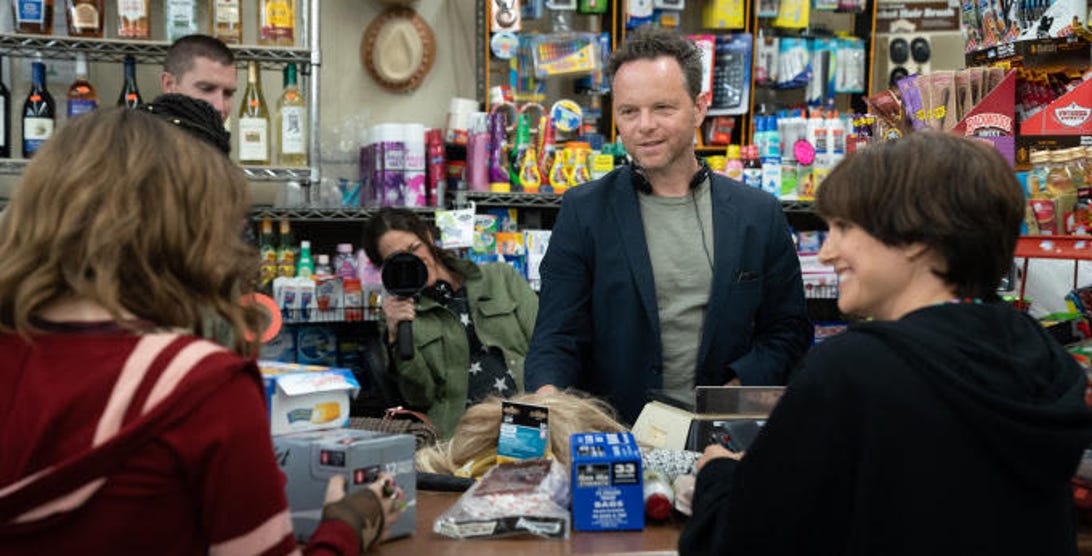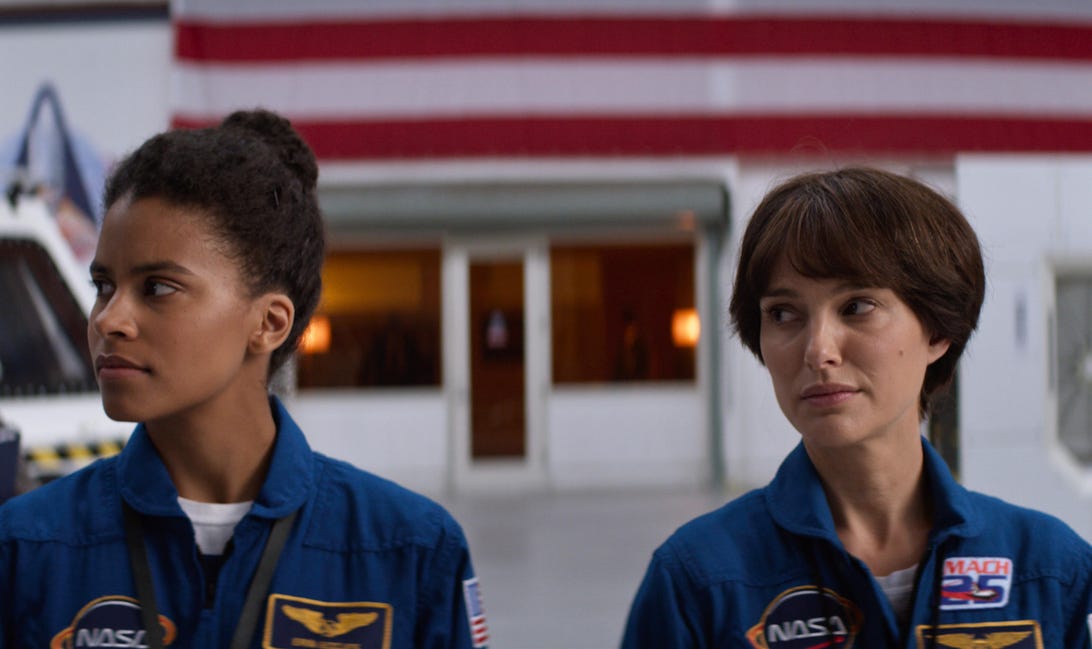Emily Blunt breaks her silence in A Quiet Place 2.
ParamountHorror sequel A Quiet Place II is a movie with almost no sound. Astronaut drama Lucy in the Sky heads into space where there's precious little light. These two very different movies presented interesting challenges for Polly Morgan, cinematographer on both films.
I chatted with Morgan back in October 2019, when she was on her way home after wrapping A Quiet Place Part II, a suspense-filled sequel she describes as a "larger-scale production" than the first Quiet Place. After a lengthy postponement due to the COVID pandemic, A Quiet Place II finally lands in theaters May 28.
Director John Krasinski and star Emily Blunt returned for the sequel, which Morgan described as "fun and challenging ... It was adventurous, I'll put it that way."
Where the original 2018 hit was a heart-stopping drama about parents and what they do to protect their children, Morgan hints that the sequel tests young stars Millicent Simmonds and Noah Jupe. "It's more about the children growing up, exploring the world and learning to protect themselves," Morgan says, careful not to say too much -- a bit like the characters in the films.
Morgan was pregnant when she saw the original, and it was as emotional as you'd expect when the film featured a baby born into a world of terrifying monsters. With neat symmetry, her baby was two months old when Morgan began working on the sequel in April. "To have a little baby and to be filming [that story] was very emotionally challenging," she says, as her newborn gurgles in the background.
Fortunately, Morgan's family joined her on the shoot so her baby could spend time with her -- and keep her awake -- at night.
A Quiet Place II leans hard on visuals to show what the characters are thinking and feeling -- a great gig for a director of photography. One scene, in which a character becomes confused by sound, uses a swirling overhead shot so the audience feels the character's disorientation.
The same goes for Lucy in the Sky, which opened in 2019. Directed by Noah Hawley, the film uses abstract and subjective filmmaking tools to put you in the head of a lovelorn and eventually unhinged astronaut played by Natalie Portman.
The lenses of Lucy
Lucy in the Sky was inspired by the real-life story of Lisa Nowak, a NASA astronaut who infamously attempted to kidnap a love rival in 2007. (She later pleaded guilty to felony burglary and misdemeanor battery and received one year of probation.) The sordid episode captured the public imagination when it was reported Nowak wore maximum absorbency garments -- space diapers -- to drive a thousand miles to commit the crime. There are no diapers in the film, much to the disappointment of social media.
Director Noah Hawley, the man behind visually striking TV shows Fargo and the mind-bending Legion, wanted to show the world from the perspective of troubled space traveler Lucy.
"Noah was more interested in the experience of going to space, seeing everything you know and everything you've ever experienced beneath you and being disconnected from it," says Morgan. "How do you reinvolve yourself after this experience changes you forever?"

Cinematographer Polly Morgan (middle, behind the viewfinder) with director Noah Hawley filming Natalie Portman (right).
Hilary B Gayle/SMPSP"That's the way Noah's brain works," says Morgan of the heightened filmmaking techniques putting you in Lucy's mind, whether they're eye-catchingly obvious to the viewer or speaking to you on a more subconscious level. Some shots, for example, emphasize Lucy's isolation by focusing on Portman with a vignette effect obscuring the edges of the frame around her.
The filmmakers also play with the film's aspect ratio -- the width and height of the image -- which changes depending on where Lucy is and what she's feeling. So for the space scenes, Morgan used anamorphic lenses to create jaw-dropping, epic widescreen images evoking the "wonder and freedom" of being in space. When Lucy returns to Earth, the film switches to a squarer, narrower 4:3 aspect ratio revealing how boxed-in and claustrophobic Lucy feels.
There's a particularly clever visual trick when Lucy returns to her unhappy marital home after an illicit date. A darkened doorway closes in on her, cutting the frame in half -- and in the next shot, inside the house, the frame is still cut in half, pushing Lucy into the margins. It's a lovely combination of cinematography and editing to symbolize how a character feels.
In another scene, Hawley and Morgan employ an "infinite zoom" effect to depict a traumatic moment. The filmmakers took still photos of city streets at incremental times of day so when the images were stitched together the sun appears to rise, like a stop-motion animation.
Portman was then filmed looking dazed in front of a blue screen, with the still images composited in behind her so it looks like she's moving through the streets. Then they wheeled her through a hospital on a camera dolly, making it look like she moved seamlessly into the hospital. Soundtracked by a dreamy cover version of Beatles classic Lucy in the Sky With Diamonds performed by Lisa Hannigan and Jeff Russo, the sequence evokes that weird feeling of finding yourself somewhere without really knowing how you got there.

Zazie Beetz and Natalie Portman join the space race.
Fox Searchlight PicturesSpace lighting
A cinematographer is responsible for the lighting of the film, something of a challenge in the blackness of space. In preparation, Morgan listened to podcasts by real astronauts, which among other things taught her how dark space really is.
"You can look down and your leg completely disappears, it's such a void," she says.
As Portman dangled on wires, the cameras and even the lights moved around her to capture the feeling of floating. Even with illumination from the sun, light and shadows look very different in space.
"It's a single light source very far away," Morgan explains, "and there's no atmospheric diffusion so the shadows are the sharpest, cleanest shadows." To mimic that, they placed lights as far as possible from Portman without losing the sharp-edged shadows.
Whether in space or on Earth, the Oscar-winning actor's face often fills the frame. Morgan describes her as "an exquisite performer ... and so easy to light."
What makes someone easy to light? Portman's bone structure helps, as well as her flawless skin. Film crews use stand-ins to set up the camera and lights while stars have their hair and makeup styled, and the results aren't always perfect.
"But as soon as Natalie stepped in, I was like, what was I worried about?" Morgan laughs.
"That's what makes a movie star a movie star, I suppose!"
New movies coming out in 2021: Netflix, Marvel and more
See all photosQuiet Place II: How cinematic magic makes silence visually scary - CNET
Read More

No comments:
Post a Comment